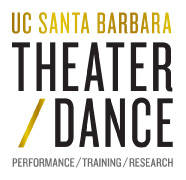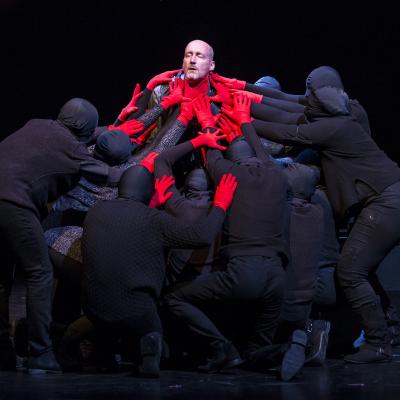The Death of Kings: Seize the Crown
Adapted from the History Plays of William Shakespeare by Irwin Appel
The Death of Kings: Seize the Crown comes back to UCSB with performances are Saturday, March 16 at 8:00 pm and Sunday, March 17 at 2:00 pm in Theater Dance West 1507. Afterwards, Seize the Crown will go to Southwest Shakespeare Company in Arizona! If you’d like to know more about the Arizona tour of The Death of Kings: Seize the Crown, please go to: http://swshakespeare.org.
Seize the Crown is a ninety-minute version of The Death of Kings that contains excerpts from the two main plays, along with some alternative material. Through narration, it weaves together the basic plot of all eight history plays and serves not only as an “appetizer” or “trailer” for the two major plays, but stands on its own as a concise encapsulation of the entire history contained in this story. It is an especially good piece for acting students as it contains some of the great soliloquys and two-person scenes in The Death of Kings. Seize the Crown received its European premiere at the Prague Shakespeare Company’s Summer Shakespeare Intensive in 2017.
“Irwin Appel’s Death of Kings is excellent theatre by a world class Shakespearean. The production is a gripping and wondrously inventive distillation of Shakespeare’s history plays compacted into a stunning and user-friendly evening for the audience. The world needs more Shakespeare like this!”
– Guy Roberts, Artistic Director, Prague Shakespeare Company
The “Birth” of The Death of Kings
On October 25, 2015, I stood on a field in Azincourt, France, 600 years to the day that Henry V and his undermanned English defeated the French at the battle of Agincourt. The sun was unrelenting, and it struck me that that very same sun had also blinded the French as the English unleashed a storm of arrows from their longbows, winning one of the most improbable victories in history. 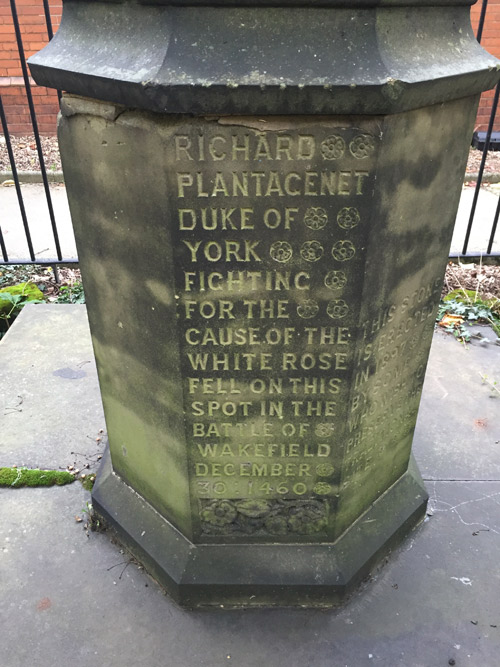 Earlier, I went to the Vieux-Marché in Rouen and sat at the spot where Joan of Arc was burned at the stake. I traveled to England to Bosworth battlefield where Richard III was killed, and also to Leicester where Richard’s bones were found under a parking lot in 2013 and then reinterred at Leicester Cathedral in 2015. I also visited the Temple Garden in London, where the rose-plucking scene from Henry VI, Part 1 takes place that is Shakespeare’s catalyst for the Wars of the Roses. I stood at Towton, the location of the bloodiest battle in English history where 28,000 were killed in one snowy day as the soon-to-be King Edward IV took revenge on the Lancasters for his father York’s death. I went to the ruins of Pontefract Castle, or “Pomfret,” where Richard II was killed in prison. I found a small monument, almost hidden next to a school district building, marking the spot of Shakespeare’s “paper crown” scene in Henry VI, Part 3, where Margaret executed Richard, Duke of York during the battle of Wakefield. I then stood on the city walls of York where Margaret placed York’s head for all to see. My purpose going to all these places was not to try to reproduce historical accuracy necessarily, but to experience how light and sound filled the area. As hokey as it sounds, I just wanted to feel the earth below my feet. I was on a quest for something abstract and tangible at the same time.
Earlier, I went to the Vieux-Marché in Rouen and sat at the spot where Joan of Arc was burned at the stake. I traveled to England to Bosworth battlefield where Richard III was killed, and also to Leicester where Richard’s bones were found under a parking lot in 2013 and then reinterred at Leicester Cathedral in 2015. I also visited the Temple Garden in London, where the rose-plucking scene from Henry VI, Part 1 takes place that is Shakespeare’s catalyst for the Wars of the Roses. I stood at Towton, the location of the bloodiest battle in English history where 28,000 were killed in one snowy day as the soon-to-be King Edward IV took revenge on the Lancasters for his father York’s death. I went to the ruins of Pontefract Castle, or “Pomfret,” where Richard II was killed in prison. I found a small monument, almost hidden next to a school district building, marking the spot of Shakespeare’s “paper crown” scene in Henry VI, Part 3, where Margaret executed Richard, Duke of York during the battle of Wakefield. I then stood on the city walls of York where Margaret placed York’s head for all to see. My purpose going to all these places was not to try to reproduce historical accuracy necessarily, but to experience how light and sound filled the area. As hokey as it sounds, I just wanted to feel the earth below my feet. I was on a quest for something abstract and tangible at the same time.
In creating The Death of Kings, I am not interested in creating museum piece Shakespeare, or even paying homage to English history. I am trying to produce an allegory for our time and make raw, energetic, vibrant Shakespeare using the power of the actor and word. I also have fallen in love with these history plays and see them as very underrated, particularly the Henry VI plays. 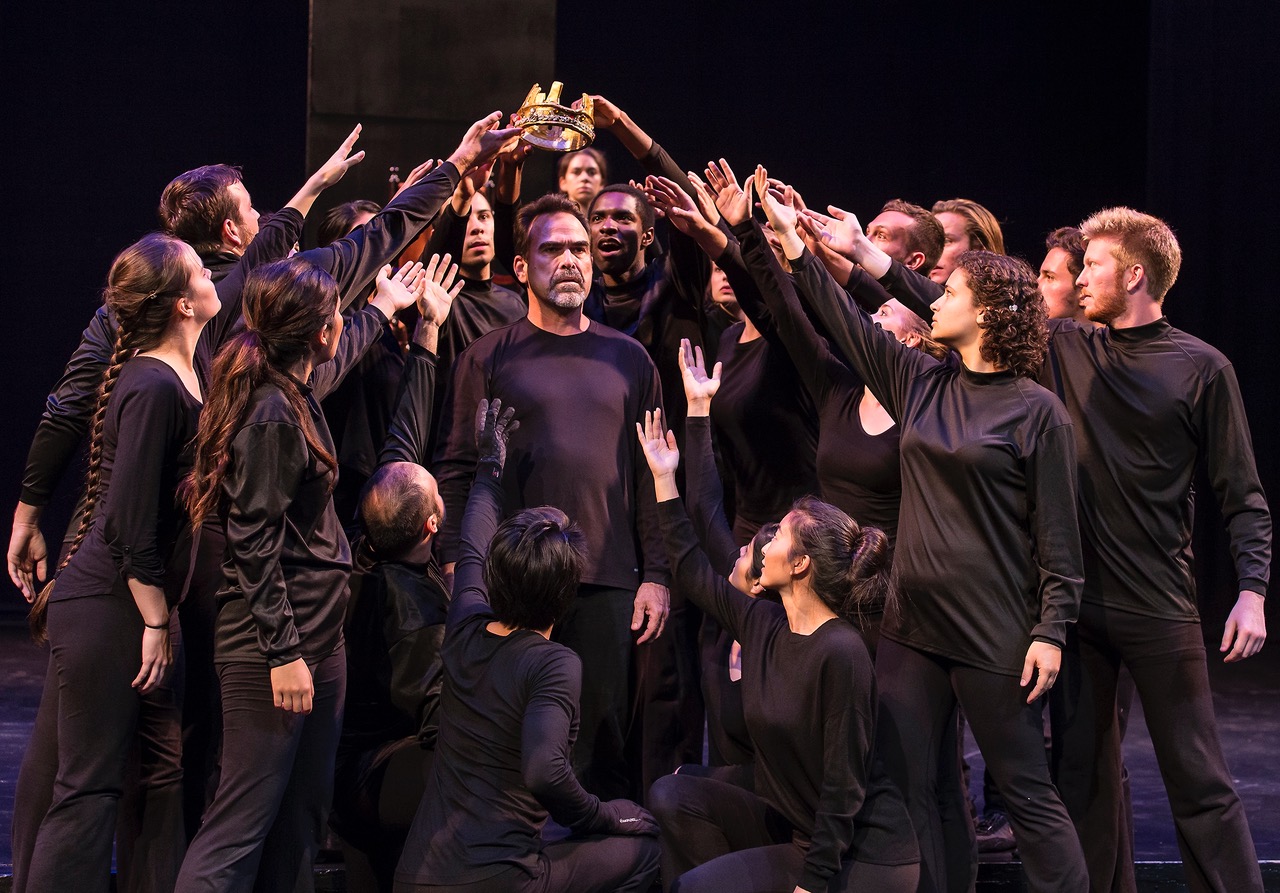 My hope is that theaters who would like to do more of the histories, but are unable to devote a season slot to a play such as Henry VI Part 2, might be interested in this epic event of two plays designed to both stand alone, and work together. Most people are unfamiliar with Shakespeare’s history plays, and that they contain some of the greatest and most profound material he ever wrote. We also live in a golden age of episodic entertainment, and I am influenced as much by Breaking Bad and The Sopranos as I am by Shakespearean history. Obviously, in trying to condense twelve hours of material down to under three for each play, there are many characters and nuances that are lost. However, what The Death of Kings hopes to reveal are complete story and character arcs in one sitting: we not only see Prince Hal introduced, but then watch him with Falstaff and his mates, then renounce Falstaff, and then become not only the great Henry V, but also the Henry V struggling with his past and sense of burden. We see Richard III from his first entrance as York’s son all the way through his demise. In a normal production of Richard III, we have very little context for the character of Margaret; in The Death of Kings, we meet her for the first time as she is wooed by Suffolk, then witness her triumph and ultimate capture, and then finally her return from exile for revenge.
My hope is that theaters who would like to do more of the histories, but are unable to devote a season slot to a play such as Henry VI Part 2, might be interested in this epic event of two plays designed to both stand alone, and work together. Most people are unfamiliar with Shakespeare’s history plays, and that they contain some of the greatest and most profound material he ever wrote. We also live in a golden age of episodic entertainment, and I am influenced as much by Breaking Bad and The Sopranos as I am by Shakespearean history. Obviously, in trying to condense twelve hours of material down to under three for each play, there are many characters and nuances that are lost. However, what The Death of Kings hopes to reveal are complete story and character arcs in one sitting: we not only see Prince Hal introduced, but then watch him with Falstaff and his mates, then renounce Falstaff, and then become not only the great Henry V, but also the Henry V struggling with his past and sense of burden. We see Richard III from his first entrance as York’s son all the way through his demise. In a normal production of Richard III, we have very little context for the character of Margaret; in The Death of Kings, we meet her for the first time as she is wooed by Suffolk, then witness her triumph and ultimate capture, and then finally her return from exile for revenge.
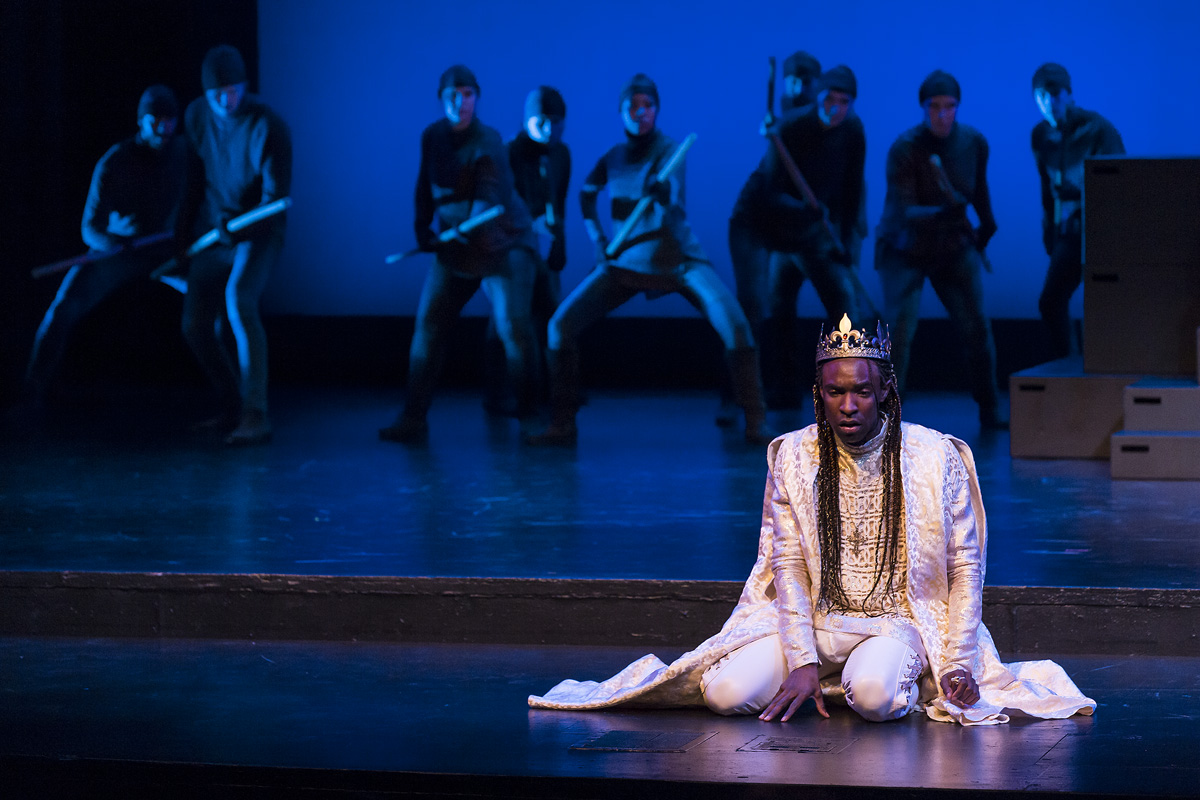 The Death of Kings often combines multiple characters into one. For example, all of Henry V’s brothers have been merged into one character called John of Lancaster. I have done this to both try to distill the relationships down to a more singular focus, as well as hopefully aid the audience in understanding who’s who. No one is more aware than I am that it seems as though every character in these plays is named either Richard, Edward or Henry! I’ve also added the devices of a storytelling chorus and of ghosts, building on Shakespeare’s use of ghosts in Richard III and chorus in Henry V.
The Death of Kings often combines multiple characters into one. For example, all of Henry V’s brothers have been merged into one character called John of Lancaster. I have done this to both try to distill the relationships down to a more singular focus, as well as hopefully aid the audience in understanding who’s who. No one is more aware than I am that it seems as though every character in these plays is named either Richard, Edward or Henry! I’ve also added the devices of a storytelling chorus and of ghosts, building on Shakespeare’s use of ghosts in Richard III and chorus in Henry V.
It is no accident that The Death of Kings was first produced in 2016, a pivotal election year. We actually had a performance on Super Tuesday. As I watched the early Republican debates, I saw the same vying for the crown on those stages as are in these plays. Some things never change….
The Death of Kings is a milestone in the twelve years of NAKED SHAKES productions at the University of California Santa Barbara, and is only possible because of the contributions of the artists and students who were part of the original productions. The faculty and guest artists include:
Jeff Mills – Associate Director, Fight Director, Actor (King Henry IV)
Christina McCarthy – Movement Director, Choreographer
Jim Connolly – Composer, Musician
Ann Bruice – Costume Design
Vickie Scott – Lighting Design
Greg Mitchell – Scenic Design
Simon Williams – Dramaturg, Actor (John of Gaunt)
Michael Morgan – Voice and Speech Coach, Actor (Edmund, Duke of York)
Anne Torsiglieri – Actor (Sir John Falstaff)
Brian Harwell – Actor (Richard, Duke of York)
Jenny Mercein – Assistant Director
Julie Fishell – Consultant, Actor (Richard II for Prague Shakespeare)
Tristan Newcomb – Videography, Archive, Website Creator
Risa Brainin – Chair, Department of Theater and Dance…
… and the brilliant work of the Department of Theater and Dance production staff, student actors, stage managers, assistant directors and crew members.
– Irwin Appel, Director and Adaptor, The Death of Kings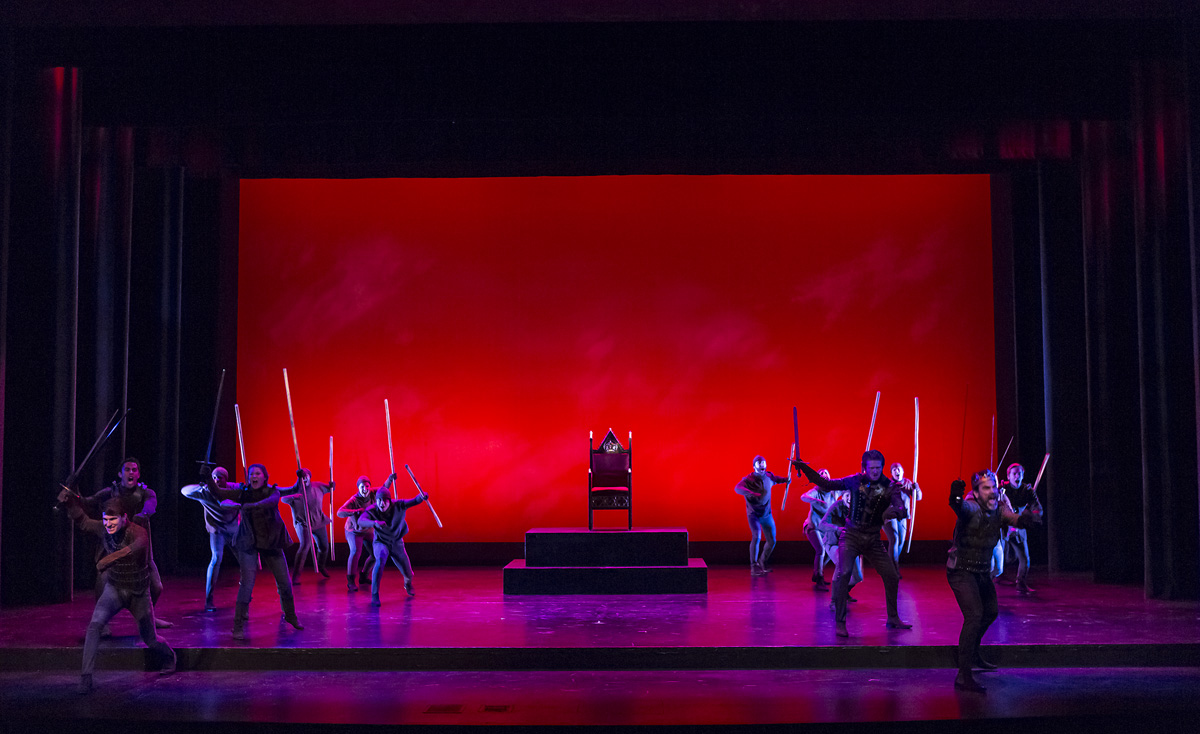
Press and Reviews of The Death of Kings
Preview, The Death of Kings
Preview 2, The Death of Kings
Review, The Death of Kings
Review, Part One: I Come But For Mine Own
Review, Part Two: The White Rose and the Red
Santa Barbara Independent Awards, 2016
(Production Photos by David Bazemore)





